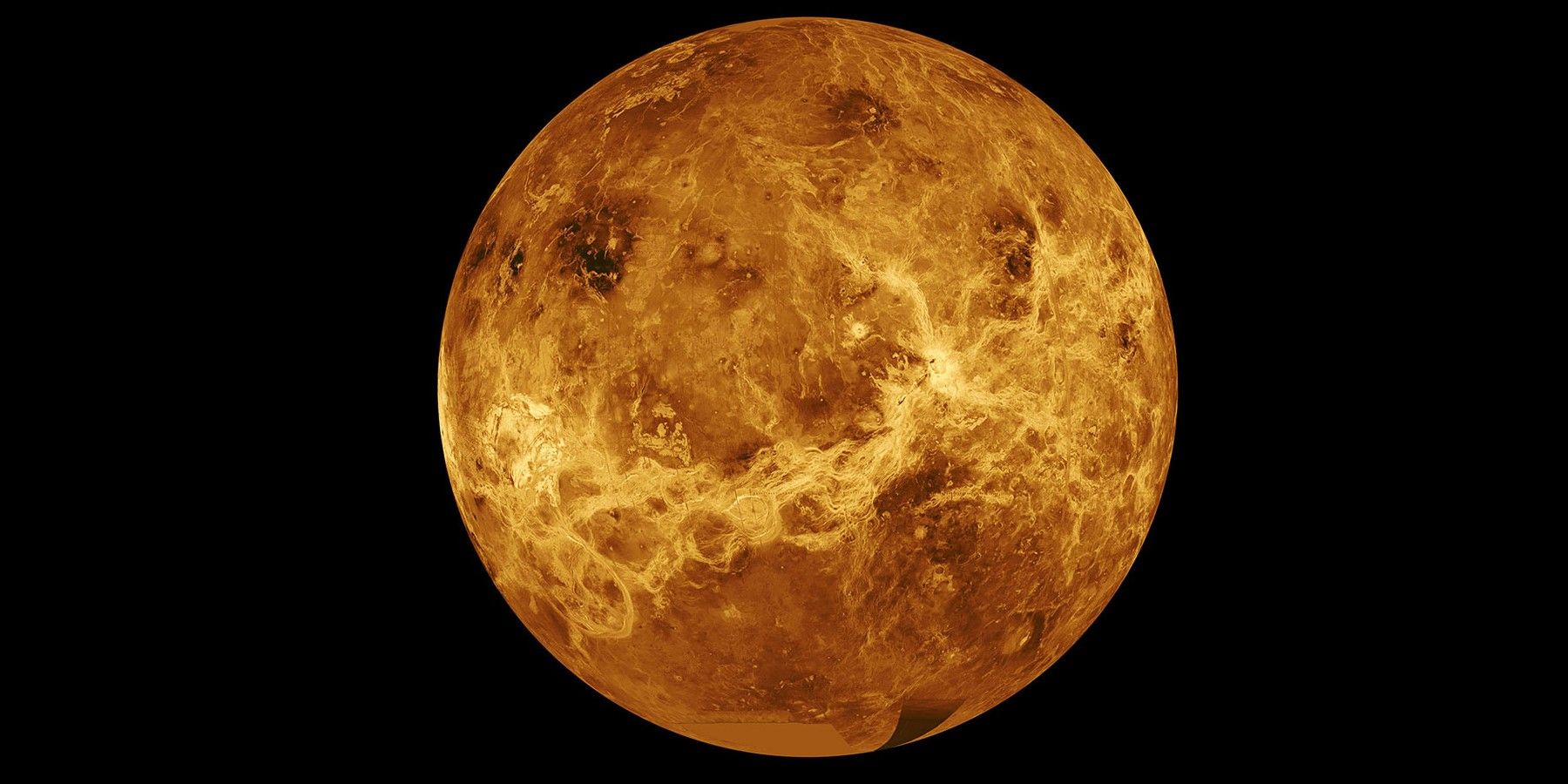Venus is often thought of as an uninhabitable planet in space, but a new study believes strange alien life could be hiding in its clouds. There are certain planets in the Solar System that get more attention than others. For a lot of folks, Mars is the primary focus. It’s close to Earth, has a solid surface, and has an environment that’s relatively easy to explore. Jupiter’s also quite fascinating thanks to its gargantuan size, gaseous composition, and never-ending storms.
One planet that’s often left out of the conversation is Venus. The second planet from the Sun and the brightest planet visible in Earth’s sky, Venus is a truly fascinating destination. It has an iconic yellow glow, a thick and toxic atmosphere, and surface temperatures that easily reach 860°F or higher. It’s not a planet humans will be setting foot on any time soon. That said, research shows that bizarre lifeforms could somehow be surviving in the hostile world.
In a study published in PNAS (the Proceedings of the National Academy of Sciences), researchers explain a hypothesis that alien life may very well exist within Venus’s clouds. Venus’s atmosphere primarily consists of carbon dioxide and sulfuric acid. However, astronomers have previously detected unexplainable sightings of oxygen and ammonia within the planet. What we know about Venus says ammonia shouldn’t exist there. Not only was it first detected all the way back in the 1970s, but the presence of ammonia on Venus would neutralize its harmful atmosphere and create livable pockets in its clouds. As the study asserts, the most logical explanation for this is some kind of biological origin — aka lifeforms.
Not The First Study For Life On Venus

As implausible as that might sound, this isn’t the first time researchers have toyed with the idea of life on Venus. In 2020, scientists detected phosphine gas within Venus’s clouds — a gas that’s largely created by biological reactions here on Earth. That particular idea, however, has since been disproven. This past July, another study in PNAS suggested that active volcanoes were the source of Venus’s phosphine rather than organic lifeforms.
That’s not to say this new hypothesis should be thrown out the window, though. Per the study’s co-author, Sara Seager, “Ammonia shouldn’t be on Venus. It has hydrogen attached to it, and there’s very little hydrogen around. Any gas that doesn’t belong in the context of its environment is automatically suspicious for being made by life.” After the proposed lifeforms create ammonia, the study explains that the ammonia dissolves into small droplets of Venus’s sulfuric acid. This chemical reaction would make the droplets habitable, thus giving the lifeforms a place to live within Venus’s otherwise dangerous atmosphere.
The good news? Seager and her team may soon have the chance to actually test this theory and see if it holds true. Within the next few years, MIT plans to begin a series of Venus Life Finder Missions to scour the planet for signs of life — part of which includes studying the clouds for ammonia and potential lifeforms. It’ll be a while longer before any of this happens, but this could be the start of something pretty amazing.




